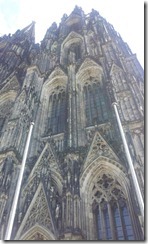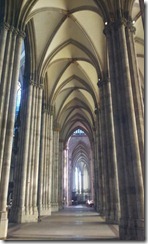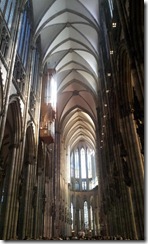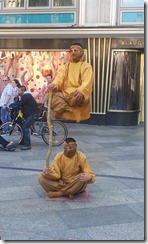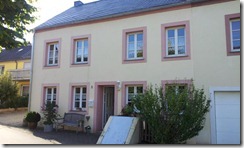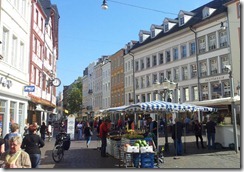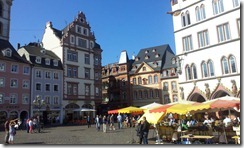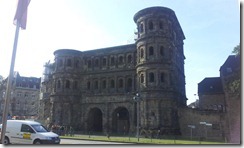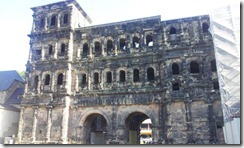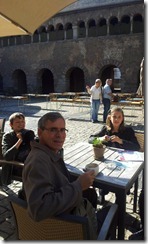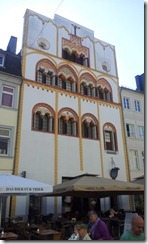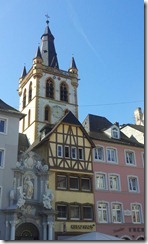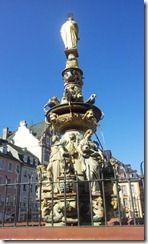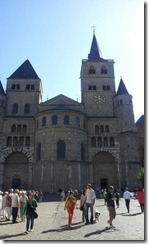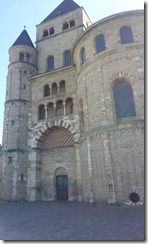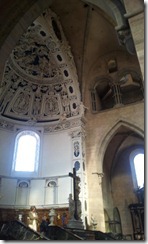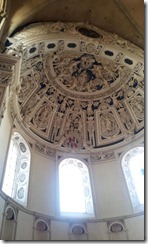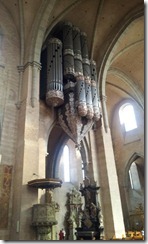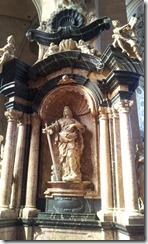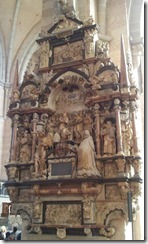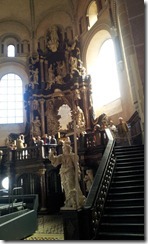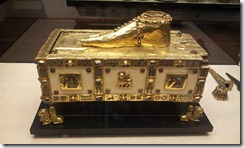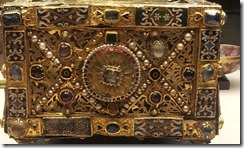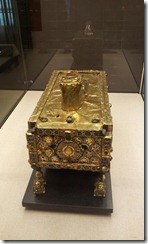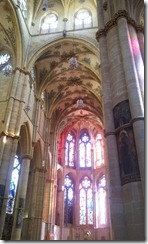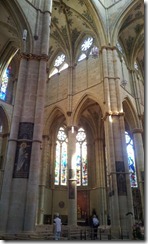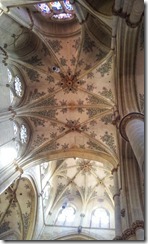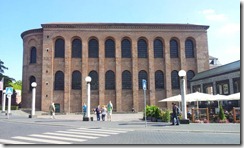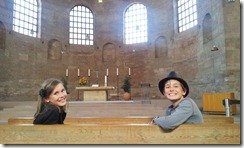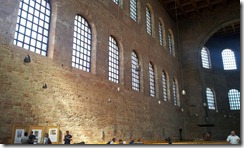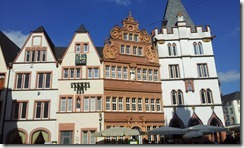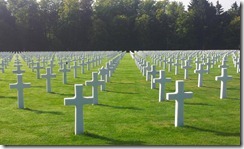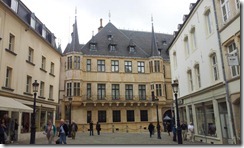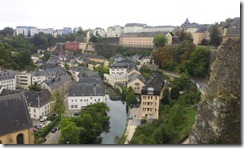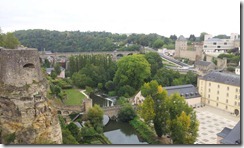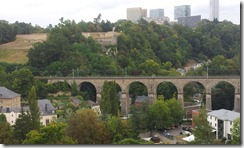I hope to keep this pretty short – we’ll see about that. The drive down this way to Roil from the south of The Netherlands went smoothly and we stopped in Cologne along the way so we could take a look round the cathedral which amazingly is Germany’s most visited landmark having about 3 million visitors each year! Construction started on the Cologne Cathedral in 1248 and according to wiki it “is the largest Gothic church in Northern Europe and has the second-tallest spires and largest facade of any church in the world.” (http://en.wikipedia.org/wiki/Cologne_Cathedral) It was the tallest building in the world from 1880 to 1884. Here are some photos:
One interesting sight in Cologne was of what looked like some guy meditating and levitating a meter of so from the ground. Initially I wasn’t sure what to think about it and then the engineer in me worked out that they were pranksters and that they must have had a metal frame concealed under their gowns. Later, when in Luxembourg we saw a couple of guys setting up, not looking anywhere nearly as legitimate as the Cologne pair. We couldn’t help laughing at their attempts to fool people but obviously by the amount of money that went into their bucket they must have convinced some. Evidently this trick is as old as the hills. Here is a short video about it: http://www.youtube.com/watch?v=etSivpBHUmE
Our house in Roil was perfect for us and a good size. I really liked the location and the small village of Roil. It was so close to other towns and only 15 minutes down the road from Trier, the oldest city in Germany.
On Monday we spent the day in Trier and enjoyed wandering around in the sun. Apart from the old town itself, which was full of activity, we had several places we wanted to visit.
Our first stop was right next to our car park, the Porta Nigra, also known as Trier’s “black gate”. It’s a large, Roman gate built around 200 AD.
Although we had only just started our Trier tour it was time to have a coffee break:
Then we walked along the old city streets and admired the buildings. One really odd looking building, shown below, was of Moorish design when buildings had to have their entrance on the second floor for protection. When someone wanted to come in the house a ladder was lowered down to the ground:
I was keen to see Trier Dom (Saint Peter’s Cathedral) which is supposed to be the oldest in Germany (http://en.wikipedia.org/wiki/Cathedral_of_Trier). It looked grand from the outside but inside was even more amazing. I’d rate it among the most impressive I have seen in this trip along with Venice’s St Mark’s and V.C’s St Peter’s. Here are some photos:
We also had a look around the Church Treasury containing loads of priceless artefacts. One that got my attention was a 1000 year old gold sheet covered box “Andreas-Tragaltar” (an Andreas deceit altar or Egbert shrine) from 977-993!
There was also another church adjoining the Trier Dom:
After the Dom we walked along further to yet another church, the Konstantin Basilica. Not as visually impressive as the Trier Dom yet the building structure is super-large. The attraction for me was firstly that it built by the emperor Constantine at the beginning of the 4th century and secondly that it is now used as a Protestant church whereas most of the churches we have seen have been R.C. I think it is the largest remaining Roman single-room structure in the world. The room is 67 m by 26 m with a height of 33 m.
Trier had a great feel to it and the central streets and buildings looked magnificent. The kids really like it as well but that may have been because the ice creams were well priced.
The next day, Tuesday, we drove about an hour west to city of Luxembourg in the country of Luxembourg. Just outside of the city we went to the Luxembourg American Cemetery and Memorial where there are the graves of 5076 American military dead, many of whom died in liberating Luxembourg near the end of the war. Among the graves is one of General Patton who was the commander of the Third U.S. division. It’s difficult not to be tearful when viewing the somber sight of the headstones, the cost of freedom.
As we had not been able to find the British Memorial Cemetery in Dunkirk I was really pleased to have been able to visit the memorial cemetery in Luxembourg. We then moved on to the city which wasn’t far away but it took us half an hour to find a car park due to congested traffic and road works. Evidently 30% of Luxembourg’s 300,000 labor force are cross-border workers from Belgium, France and Germany and as the population of the city is only about 100,000 that suggests another 100,000 must commute to the city in addition to those who come from other countries. That all adds up to a lot of road traffic.
Unlike the relatively flat countries of Belgium and the Netherlands, Luxembourg is hilly. The city originates from the Roman era when a fortified tower guarded the crossing of two Roman roads. Later, sometime around 963, Siegfried I built a castle on the Bock rock and then a marketplace and city developed. One of the museums we went to, the Historical City Museum of Luxembourg, went through the development of the city and had interesting models at various time periods.
Probably the best part of the day was not the museums, although the buildings they were housed in were fascinating as half of the floors were built by digging into the rock under the historic buildings, but rather walking through the streets to the museums. In hindsight we probably should have skipped the museum and just enjoyed the cafes. It was a longer day in Luxembourg than I had planned and I was pleased when we arrived back home to Roil. That night we again packed our bags, ready to move on to Strasbourg.
(Week 31A: Sunday, 16 September 2012 – Wednesday, 19 September 2012)

